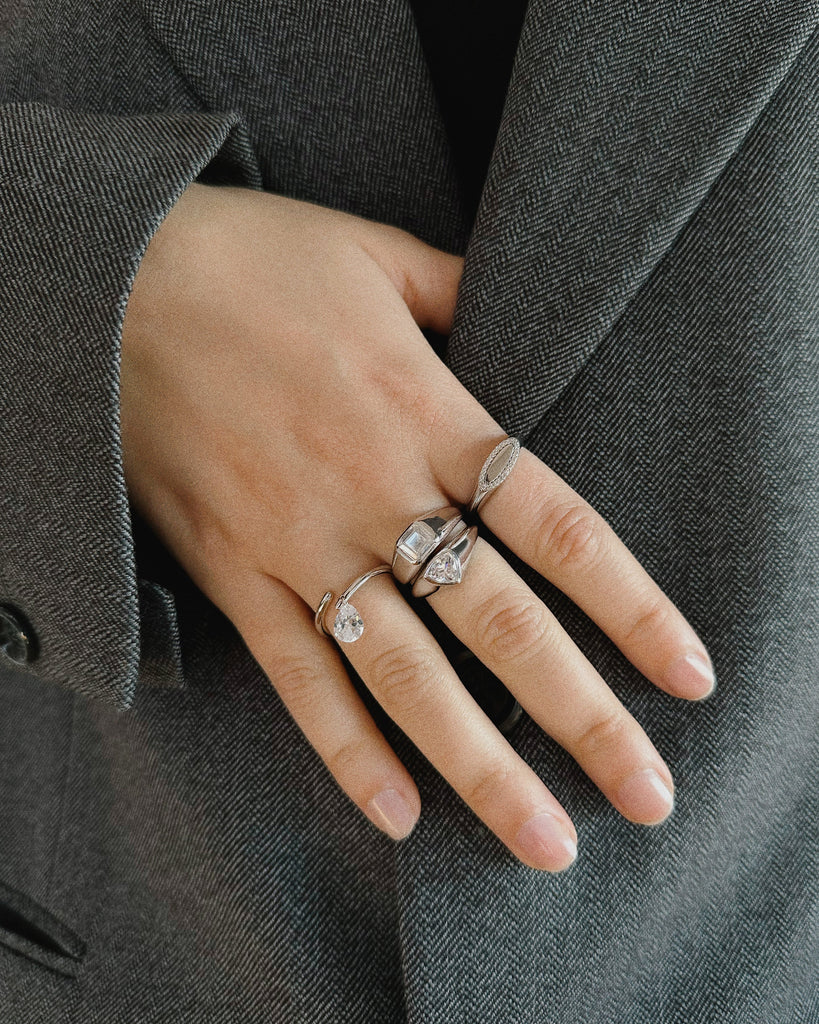VOL I | Getting started: where &; how, aftercare tips and piercing placements
One of the trends that, without a doubt, is here to stay is ear piercings. We know all too well that if the urge to get a piercing comes... it won't go away. But, even though piercings are not as permanent as tattoos, there are certain things you should consider before getting them done.
To save you time, we've created The PDPAOLA Piercing Guide, the essential handbook of the ear piercing world.
1/ WHERE AND HOW
Where do I get a piercing? Will it be done well? Will it get infected? These are some of the doubts that arise when we know we want a new piercing. And it is normal. But don't worry, every question has its answer.
In an ideal world, piercings would be done with a needle and not with, a gun as guns can cause injury to the ears. In addition, because they are partly made of plastic, they cannot be sterilized in a 100% safe way. In contrast, needles do not damage tissue and are completely sterilizable. They are also much more precise than guns. So if you want a perfect piercing, best choose a professional who works with needles.
And when we talk about needle experts, we are talking about tattoo artists. In the tattoo studios they have the necessary space and equipment to perform piercings safely and accurately.
To prevent piercings from getting infected, specialists use earrings that might not be the coolest looking but are made of anti-allergic materials such as steel, titanium or gold. You can probably guess that, depending on the material, the price will be different.
2/ AFTERCARE
Let's say you have already followed our advice and your new piercing is all done. Now comes the most important part: how to take care of your piercing. Following these three tips will save you a lot of trouble.
1. Prevention is better than cure. Clean your hands carefully with soap and water before touching the piercing - we don't want it to get infected!
2. Cleaning time. Rub both the piercing and the surrounding area with a bit of neutral soap and warm water. It is not necessary to move or twist the jewelry, as that can cause some bacteria to enter the perforation and become infected.
3. The final touch. The last step is to carefully dry the area with a dry and clean paper to avoid any kind of humidity that could cause infections.
Ideally, you should repeat these steps at least once a day until you gradually feel no discomfort. Even so, if you feel pain or any kind of irritation, redness or a lump in your piercing, talk to a piercing professional for advice.
3/ DOS & DON’T S
We want you to know that, apart from taking good care of your piercing, it is essential that you take into account small details that can prevent future problems. The do's and don'ts to further care for your piercing.
DO’S
- Please keep the same jewelry for 6 to 12 weeks after getting pierced. Earlobe piercings heal faster, so 6 weeks is enough. On the other hand, cartilage piercings take longer.
- Try to sleep on the opposite side of the pierced ear. Pressure and piercings don't get along very well, so try to let it breathe in peace as long as possible.
- Try to tie your hair back so that the perforation wound does not come in contact with the bacteria in your hair.
DON’TS
- Do not touch the piercing unless it is necessary. The body is wise and we must respect its timing. Be patient.
- Do not apply any oil, lotion or makeup on or around the piercing because you may plug the piercing hole.
- Do not use alcohol on your piercing. It will slow down the healing process.
4/ PIERCING LOCATIONS
Okay so you want to get your ear pierced, but you are not sure which piercing will suit you best and which is the ideal placement. Don’t worry, so you can put your doubts to rest, here is a selection of the main piercing placements.
EARLOBE PIERCINGS
If you are new to the world of piercings, you can begin to experiment with lobe piercings. They are a must and really enhance the features of the face. The lobe is the most visible part of the ear, so you can show them off without too much effort. Piercings in the lower lobe are the ones commonly known as the traditional "earrings”. In order to get inspired, picture yourself with the Nikita or Vero piercings glittering in one of your ears. Quite a fantasy, don't you think?
CARTILAGE PIERCINGS
If you want a bolder look, you should definitely get a cartilage piercing. But be prepared, because the variety of piercings is almost infinite in this part of the ear. They are usually a bit more challenging to heal, but the result is incredible.
Helix piercings tend to be the most common among piercing victims because they add a lot of character to the ear. If you decide to go for this piercing, the Uma earring will add the final finishing touch.
If you want something more risky, there are other options such as the daith and rook piercings. These piercings are very popular because they bring a casual and bold style to your ear look.
But while these are some of the piercing possibilities out there, trust yourself and take a risk, always following your own style.

